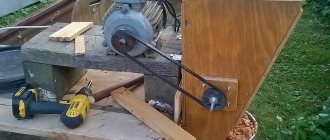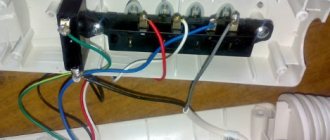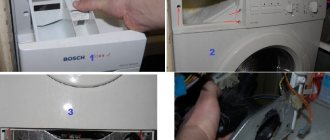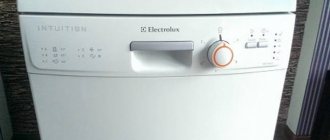What types of washing machines are there?
Washing equipment is usually divided into 2 large groups:
- Mechanical.
- Automatic.
Progress has long been made in improving the functionality of the washing machine, so it is not advisable to devote time to considering the mechanical family. Such models can only be found in technology museums.
The design of a washing machine is much simpler than it seems at first glance.
Much more urgent is the construction of an automatic washing machine. It includes a fairly large amount of precision electronics, knowing the operating principle of which, you can extend the uninterrupted operation of such equipment for a long time.
Washing machine device - automatic
As mentioned earlier, the washing machine circuit includes many autonomous control elements, which are combined into a single system by an electronic unit.
general characteristics
In abstract form, a washing machine is:
- Frame.
- Water filling system.
- Washing system.
- Water drainage system.
A clear understanding of the technical device will extend the life of your favorite assistant and improve the quality of washing.
Currently, you can find front-loading or top-loading models on sale. According to the principle of operation, they are the same.
Internal organization
In the durable metal body of the machine, all electrical and mechanical systems are connected together, thanks to which the equipment receives its complete functional purpose.
The housing includes the following parts:
- Fill valve.
- Tank and drum.
- A heating element.
- Engine.
- Water drainage system.
- Control block.
The internal structure of an automatic washing machine consists of parts and assemblies that are responsible for a particular function.
All these systems will be discussed further, because the functioning of the washing machine largely depends on their correct use.
Technical device
Knowing and skillfully using each component of the washing machine, you can easily extend its service life for a very long time. Let's take a closer look at each technical block of this complex system.
Pressostat
The correct functioning of this sensor directly affects the quality of washing items. After all, the pressure switch is responsible for monitoring the level of incoming water. Accordingly, the more accurate its readings, the better the concentration of washing substances in the water is maintained.
A pressure switch or level sensor controls the amount of water in the tank.
Note! Incorrect functioning of the pressure switch can result in water overflowing outside the washing machine tank.
Symptoms of a faulty pressure switch are:
- Starting a wash without water.
- Incorrect level when washing - too much water or too little.
- Frequent repetition of cycles of pumping out dirty water and supplying clean water.
- Malfunctions of any of the washing programs used.
If any of the above problems occur, you must immediately call a technician to fix it, as well as prevent further failure of other systems.
Water intake valve
This unit is made in the form of an electromagnetic valve controlled by the main unit. This valve can have only 2 operating positions - open or closed. Its operation is possible only with a functioning pressure switch, otherwise the control unit will not be able to correctly monitor the level of water drawn into the machine.
Depending on the type, the valve can have from one to three coils.
Water is supplied through the valve, then the liquid is directed to the container for detergents, after which it enters the tank. Before intake, water is passed through a grid with small holes to mechanically clean the water from debris.
The main factor in valve malfunction is the inability to transition to the open state. Accordingly, washing becomes impossible. One of the signs of a faulty water supply system is the absence of characteristic clicks when starting a washing program.
Note! In the event of a malfunction, it is recommended to replace the entire supply valve; disassembling it yourself can result in a flood, since such devices are supplied in a solid plastic case, which is practically impossible to reassemble.
Tachogenerator
Tachogenerator is a device designed to control the number of engine revolutions. Not only the noise level of the wash, but also the stability of the washing machine during operation, as well as the durability of the belt that transmits the torque from the electric motor to the drum, depend on compliance with the established operating mode.
It is the tachometer that helps the electronic unit regulate engine speed.
The sensor is installed on the engine, and as its speed changes, the magnetic field of the device is adjusted. The control unit, receiving data about such a change, also adjusts the number of engine revolutions.
Symptoms indicating a malfunction of the tachogenerator include incorrect drum rotation speed in all washing modes. When soaking laundry, this can result in insufficient cleaning of contaminants from the surface of the fabric; during spinning, incorrect operation of the tachogenerator can result in poor quality of this operation, and in the most critical cases, destruction of the drum rotation mechanism.
temperature sensor
The temperature sensor is another important link that can ensure high quality washing. This element controls the level of water heating, and therefore is responsible for compliance with washing modes.
Having received readings from the temperature sensor, the control unit regulates the supply of electricity to the heating element, thereby achieving the best temperature match to the selected washing mode.
The thermistor determines the degree of water heating by sending a signal to the module.
A sensor malfunction is determined by a discrepancy between the water heating temperature and the selected program. As a rule, the degree of heating of glass in a front washing machine is measured. In top-loading models, the health of the sensor can sometimes be determined only by the presence or absence of control unit errors. Most often, problems in the operation of this sensor are determined precisely by the incorrect water temperature, and not by the lack of heating in principle.
Note! The lack of heating of water during washing may also indicate a problem with the heating element.
Other elements
Some modern models may contain elements such as an electronic clock that shows the time remaining until the end of the washing program. Many machines are equipped with an alarm system for the end of the program.
Remote control allows you to set modes and programs in the washing machine.
All these components are brought together by an electronic control unit.
DIY diagnostics of the Indesit washing machine
To repair yourself, you need to determine the direction to look for the breakdown. If this is a mechanically controlled washing machine, then you need to pay attention to signs characteristic of certain malfunctions.
For example, if a leak appears from the outside, you should look for a violation in the connection of the solenoid valve, check the integrity of the hatch cuff, and monitor the tightness of the drain paths.
Complete “silence” of the machine indicates a breakdown in the electronics or a broken contact. If the lights come on, but the rotation does not start, then there is probably a problem with the engine. Stagnant water refers to a faulty pump or a clogged filter. If everything works, but washing occurs in cold water, then there is a problem with the heating element or the accompanying temperature sensor.
Repairing an Indesit washing machine with your own hands is easier if it has an electronic control that has a self-diagnostic module that can recognize the problem area. The equipment reports a fault found with a code on the display. It consists of the letter F and several numbers. Here are the codes for which it is possible to troubleshoot the problem yourself:
- 02 - elementary overload, which prevents the engine from rotating the drum, or bearing failure;
- 03 - failure of the heating element or the temperature sensor itself;
- 04 - no accurate data on the liquid level (clogged inlet);
- 05 - stagnation of water due to pump failure or blockage in communications;
- 07 - no liquid heating;
- 08 — heating element short circuit;
- 10 — level sensor is broken;
- 13 — drying mode is broken;
- 16 - bearing failure, drum overload or poorly closed door (in devices with vertical loading);
- 17 — UBL is broken or the front hatch is poorly closed.
If one of the above codes comes on, you can set yourself up for independent repairs. If other errors are displayed, you will have to call a technician. Next, we will consider ways to troubleshoot an Indesit washing machine with your own hands in two categories: mechanical breakdowns and failure of electronic equipment.
Performing parts
As the name implies, this group of parts works by receiving signals from other sensors and does not generate any impulses on its own, and in some cases is a purely mechanical component.
The list of performing parts includes:
- Electrical engine.
- TEN-heater.
- Hatch locking device.
- Drain pump.
- Tank with drum.
- Shock absorption system (springs, counterweights).
- Drum pulley.
Let's look at each detail in more detail.
The electronic unit gives a command to the parts, after which they begin to work.
Electric motor
The washing machine engine generates revolutions at all stages of washing for the drum. The torque from it is transmitted to the drum through a drive belt or direct connection.
The engine speed is regulated with the participation of a tachogenerator; the control unit is responsible for supplying a particular voltage level to the motor. This ensures that the drum speed corresponds to the selected washing mode.
Their design is reliable, so such motors rarely break down.
As a rule, the electric motor is a fairly reliable component of the washing machine; it rarely fails. The most common causes of failure are water, insects, and foreign objects getting inside electrical components. This leads to a short circuit in the winding; in the event of such a breakdown, the engine must be repaired, and if such work is impossible, it must be replaced.
The engine is located under the drum; the most common method is a belt connection to the drum.
Electric heater (TEH)
The heating element in modern washing machines is often a consumable part. All due to the low quality and high aggressiveness of water in modern pipelines. Scale is the main reason for heater failure. Therefore, many manufacturers recommend periodic maintenance of their machines with special cleaning agents.
The electronic unit sends a specified signal to the heating element, after which heating is performed.
A heating element is a tubular device, the metal cavities of which are filled with a special composition to improve heat transfer.
It is located at the bottom of the drum, access to it is quite easy and, if necessary, anyone can replace the heating element.
Note! When carrying out such work, it is necessary to disconnect the washing machine from the power supply and drain the water from the tank.
Hatch locking device
In essence, this system is a simple solenoid lock, which is in the “open” mode when not working.
When you turn on any washing program, the hatch for loading things is blocked to prevent it from opening while the machine is operating.
This is an electronic door lock. You manually close only the mechanical door lock. When the program starts, a click is heard, which indicates that the hatch is locked.
After completing the selected program, the lock returns to its non-working mode, allowing access to things.
Drain pump
This mechanism is in second place after the heating element in terms of failure rate. Especially if before washing it is not practiced to check the pockets of things and remove excess change from them. Once in the drain system, such unwanted parts block the unhindered drainage of water, which can lead to pump failure.
Almost every machine has a system for cleaning drain pipes, which allows, first of all, to remove unwanted elements from them. After the drum with dirty clothes has gone through several cycles, the water is usually replaced. This is what the drain pump is used for.
The pump allows you to pump water out of the tank after washing and rinsing. There are synchronous and asynchronous pumps.
Tank design
The tank is the most bulky element of the washing machine. It is a plastic case containing a metal drum, a heating element and a thermostat.
The tank must have pipes for connecting the water supply system and draining it.
Recently, many manufacturers have been using non-separable type tanks, in which, if the rotation bearing fails, it is necessary to completely replace this element, or to purchase new equipment.
The tank can be made of steel or plastic. The latest development is a polyplex tank.
Shock absorbers
When operating at high speeds, the washing machine tank is inevitably exposed to large forces that rock it. Shock absorbers are designed to smooth out such vibrations.
During the operation of the washing machine, they take on all the loads, so they also break down with frequent overloads. The main signs of faulty shock absorbers include excessive vibrations of the washing machine body. This may eventually cause the main drum bearing to break.
Dampers or shock absorbers are parts that dampen vibrations during the operation of the SMA.
One of the symptoms of faulty dampers is that the electric motor drive belt periodically falls off.
Note! Replacing faulty shock absorbers yourself is not recommended, since it requires dismantling the drum mechanism.
Springs
Springs provide an additional damping effect when the washing machine operates at high speeds. Unlike shock absorbers, which dampen longitudinal vibrations, springs are responsible for the absence of horizontal vibrations.
It is thanks to them that the tank remains in a relatively motionless state on its axis, as far as possible. Being a simple mechanical element, springs can stretch due to frequent overloads, in which case they should be replaced. This can be done without removing the drum. It is enough to open the top cover of the case and carry out the necessary work.
Springs hold the tank on top and perform the same function as shock absorbers.
Pulley
The drum pulley is involved in the process of transmitting torque from the electric motor. Most often, such work is performed by a drive belt; in some cases, you can find models with a direct connection between the pulley and the drum.
This part is quite reliable and can only fail if the belt is skewed, but under normal operating conditions of the washing machine this practically never happens.
If the washing machine has a belt-driven motor, then a pulley is attached to the tub.
Counterweights
The heaviest and most monumental part of the entire “washing machine”. It can be produced in two types - top plate and side panels. In both cases, it is a dense and heavy element that provides additional vibration damping and prevents the drum from transmitting strong vibration to the body.
To ensure the best stability, when installing the machine in a permanent place, you need to ensure that it is level.
Heavy blocks are made of concrete or plastic. They are bolted to the outside of the tank to restore balance.
Drum
The drum structure of an Indesit washing machine is a metal cylinder with a large number of holes through which water flows and drains to the clothes. The tank and drum are fastened together with a rubber cuff. This design allows you to dampen vibrations that occur when the drum rotates, and also ensures the tightness of the tank.
A shaft is attached to the back of the drum, through which it rotates via a belt drive. A bearing is installed between the shaft and the tank body, which performs 2 functions at once:
- Ensuring drum rotation.
- Additional sealing of the tank.
Located inside the tank, made of stainless steel.
If this bearing fails, a complete replacement of the tank may be required. This happens in cases where the system is not dismountable.
Important! The main reason for drum bearing failure is periodic excessive overload during washing. Therefore, you must always adhere to the requirements of each model for the maximum weight of laundry available for loading.
Do-it-yourself mechanical repair of the Indesit washing machine
Mechanical failures can be simple, which can be resolved in a couple of minutes, or complex, requiring disassembly of the case and replacement of components. Here are the most common malfunctions of Indesit machines and how to fix them yourself:
Increased vibration and jumping
If, during the spin cycle, Indesit begins to jump and move from place, then the reason may be in the directional distribution of the laundry or overload. To eliminate this phenomenon, it is necessary to stop the device when there is no water in it, wait until the hatch is unlocked and transfer things inside the drum. If the load is heavy, you can remove something and start the wash again.
Even increased vibration occurs due to an uneven floor, for which the machine is equipped with twist-out legs. The sagging corner is set on a level with the rest so that the body does not swing. You can finally check the evenness with a bubble level or a plate of water placed on the housing lid.
If the problem appeared immediately after purchase, then repairing the Indesit jumping washing machine with your own hands is done by unscrewing the transport bolts located on the rear wall of the case. When installing household appliances on tiles or laminate, you should place a rubber mat or small circles to prevent slipping.
If all of the above is done, but the machine continues to jump during the spin cycle, then the reason lies in loose shock absorbers. Over time, they stretch and no longer dampen vibrations properly. To solve the problem, turn the body on its side and remove the springs. They are attached with simple hooks, so DIY repairs are quite possible. To replace, it is worth choosing the correct length of the new shock absorbers. Parts from other machines will also work - the main thing is that the parameters match.
No water supply
Periodically, Indesit washing machines do not draw water, while all the buttons work, but when the program starts, the washing does not start. Here, the repair is performed at the inlet, where the supply filter in front of the tap or directly at the entrance to the housing is clogged.
To get to the first one, you will need to turn off the water in the house and unscrew the filter block in front of the tap that leads the water supply branch to the machine. Often rust and deposits from the system accumulate there.
Cleaning the filter of the Indesit washing machine with your own hands requires unscrewing the flexible hose connected to the back of the case. There is a fine steel mesh that traps residual debris. With prolonged use, the throughput drops and water stops flowing. Having removed foreign particles, the unit is assembled and the wash is started again.
Leaks on the front panel
Another common malfunction of this Italian brand of household appliances is water leakage on the front panel. This often occurs after carelessly removing laundry from the drum, when hard elements (large buttons, fasteners, metal decorations sewn to clothing) cling to the rubber cuff and tear it. Because of this, the tightness of the hatch cover is broken and water flows out.
When the leak is found, repairing the Indesit washing machine with your own hands is done by disconnecting the cuff clamps and twisting this place to the top, where the water pressure is less. The hole can be sealed with a rubber patch and “Moment”.
Stagnation of water in the drum
Sometimes in household appliances of this Italian brand, water remains in the drum. The washing program cannot be completed because it is not possible to spin. A common cause is the accumulation of debris in the drain filter. Do-it-yourself repair of this part of the Indesit washing machine involves stopping the washing program and disconnecting the unit from the network. Next you need:
- Remove the plastic decorative cover from the bottom of the housing.
- Behind it there is a plug for emergency drainage of water. Due to the low height above the floor, you will need a basin with low walls and a rag. Substituting the container, the plug is unscrewed and the liquid is drained. This can be done in doses, periodically screwing it back to collect water from the floor.
- There is a filter on the back of the plug. It comes in the shape of a cone with catcher ribs or a cylinder with mesh walls. Garbage from clothes and items forgotten in pockets accumulate here. Due to the narrowing of permeability, water stagnates, which leads to breakdown.
- Having removed all the excess, the plug is returned to its place and rinsing is started to check the permeability of the system.
If after this water continues to accumulate in the drum, then the blockage may be located higher in the pipe. It is L-shaped and connects the tank to the filter. After prolonged use, large objects also collect there (underwires from bras, pen caps), on which smaller ones are placed, which leads to clogging. The plastic corrugated tube is secured with two clamps, but to get to it you will have to turn the machine on its side. Having removed and cleaned the channel, everything is returned to its place and tested by drawing and draining water.
Pump jamming
When water remains in the drum and the pipe and drain filter are cleaned, the cause of the breakdown may be jamming of the pump impeller. This is accompanied by an uncharacteristic hum of the pump during pumping, the inability to drain water, and even the smell of burnt wiring. Here you can repair the Indesit washing machine with your own hands by disassembling the drain filter and shining a flashlight into the channel further.
The pump impeller looks like four plastic blades on an axis, the rotation of which forces water into the drainage pipe. With the appliance unplugged, carefully check the rotation of the element with your finger. So, you can find the blocking object (often small coins or buttons), take it out and return everything to its place.
Bearing failure
The most serious mechanical failure is the failure of the bearing on which the drum rotates. When exposed to moisture or after a long service life, the lubricant in it dries out, which leads to the disintegration of the internal parts of the assembly. This is accompanied by a metallic grinding sound and poor rotation of the drum.
Repairing the bearing of an Indesit washing machine with your own hands complicates the hard-to-reach location of the part. To replace it you will need:
- Remove the top cover of the machine.
- Disconnect shock absorbers and springs.
- Pull the drum out.
- Treat its landing site with WD
- Try to knock out the bearing. Masters have special devices for this, so if it doesn’t work, it’s better to contact them.
- When the bearing has been knocked out, the new one is carefully lubricated and put in place by lightly tapping the side around it.
Other details
The most important components of a washing machine were discussed above, but it also contains other equally necessary elements. More about them later.
Dispenser tray
This tray ensures that cleaning agent and freshener are dispensed when necessary. Depending on the means used, 1, 2 or all 3 sections of the tray may be used. It is located on the front panel in the upper tier near the control buttons and information panel.
The tray is placed in a hopper to which hoses from the inlet valve are connected. Through them, water flows into the compartments to collect the powder.
Rubber cuff
Responsible for the tightness of the connection between the drum and the tank. It can be damaged by sharp objects, so it requires careful handling. For example, using bags for washing things.
The rubber seal is located on the hatch and serves to seal the door.
Hoses and pipes
Integral components of the washing machine are also a number of pipes and hoses. These include:
- Hose for supplying clean water from the water supply.
- Hose for discharging dirty water into the sewer.
- Connection pipe between drum and pump for dirty water.
All these elements are also involved in the washing process. The only problem with using them is the blockage, which can be easily removed by simple cleaning.
The hose is installed at the water inlet. Its other part is attached to the body.
How to disassemble a washing machine - features of disassembling branded appliances
Samsung
In Samsung machines, the powder loading tray is held on by two screws. The heating element in Samsung is located under the front cover at the bottom of the tank.
Ariston
The worst problem for Ariston is in the seals and bearings. The manufacturer tried to make this unit unrepairable, although nothing is impossible for skilled hands.
The Ariston tanks are solid and in order to change the seals you will have to flare it or saw it (metal or plastic).
Ariston disassembled
Atlant
It is more convenient to remove the drum on Atlantas from the top, after first removing the counterweight and removing the top control panel. The drum here is collapsible (the two halves are bolted together, which is very convenient for repairs).
Electrolux
The front panel of the Electrolux is removable and provides access to all main components.
To repair and replace bearings and seals, you do not need to dismantle the entire tank, since they are located on removable supports.
LG
To remove the front panel from the LG, you need to unscrew the hatch cover and then remove the cuff. It is held in place by a clamp, tightened in one place with a screw. You can find this screw if you lift the edge of the clamp with a screwdriver and move in a circle.
To make it easier to pull out the drum, first remove the top weighting material from it.
Indesit
The back wall of the Indesit machine is a small oval panel that is secured with 6 bolts. And the top cover is inserted into the grooves; to remove it, you need to unscrew 2 bolts and then pull the part towards you without lifting it.
The heating element is under the tank, convenient access to it is through the back of the device. The weighting load in Indesit is located in two places - above and below the tank.
Removing the side panel in Indesit washing machines
Bosch
The Bosch washing machine kit includes a special wrench, which is located in the base panel. Behind it there is also a drain pump (in the lower left corner).
Washing process
Having learned from all the previous material how the washing machine works, you can easily begin the process itself. The algorithm consists of the following stages:
- Preliminary sorting of things. In order not to spoil the appearance of your clothes, things are divided into black, white and colored. All three groups are washed separately from each other.
- Checking pockets for foreign objects, packing clothes with large zippers into laundry bags.
- Loading the washing machine drum in accordance with the maximum weight of dry laundry recommended for each specific model.
- Closing the tank of the machine with the front door. You must make sure that the lock is securely closed, otherwise the locking electromagnet will not work and the washing will not start.
- Loading detergent into the tray.
- Selecting the required washing program. Depending on the type of control, manual or automatic, this selection occurs either using a rotary mechanism or by pressing the button for the corresponding washing mode.
- Controlling the start of water flow into the drum and the start of its rotation.
- Control over the activation of the heating element during the washing process by simply touching the glass part of the door.
- After the end of the washing cycle, open the ram and remove the washed items. Removing debris, hair and other particles from the rubber cuff that did not escape through the drain channels.
In modern machines, all actions are performed automatically; you just need to select the washing mode.
It is also recommended to leave the drum ajar for a few minutes after finishing washing to allow it to dry.
Auxiliary elements
We have figured out how the basic parts of the Indesit washing machine work. However, there are many more. Their role is not so fundamental, but without them your washing will not happen either. Here is their list.
- Parts that prevent the harmful effects of vibration on the tank are springs and shock absorbers. They dampen vibration.
- To prevent water from flowing out from under the hatch cover, there is a special cuff. This is a kind of rubber seal that tightly seals the hatch when washing.
- Hatch blocking device - abbreviated as UBL. This detail also helps to completely close the hatch and prevent accidental or independent opening. As long as the UBL is in good working order, water will not pour out of the machine.
- Drive belt. The one that directs the rotation to the pulley, and the pulley, as you remember, helps rotate the drum. Therefore, for the drum to operate, you cannot do without this part.
- Counterweights. Counterweights are very large stones, both in volume and weight, that are installed inside the body, increasing its mass. Due to these parts, the machine has the ability to resist centrifugal force during spinning. Otherwise, the washing machine would move very actively around the room due to pressure on the side walls.
- Hatch door. There is no need to describe the significance of this detail. Without it, washing is basically impossible.
- Powder receiver. There you place detergent and conditioner, which are dosed into the tank during the washing process. As a rule, it includes three compartments for different types of detergents.
- Pipes. Through them, water moves into and out of the tank. Built into the body.
Now, knowing all the details of the operation of the Indesit washing machine and the features of its design, you can easily analyze its behavior and condition. If a problem occurs, you will know what to look for first, and you will probably be able to carry out simple repairs yourself. Remember that if you treat it with care, your device will last you much longer and will delight you with its quality much more.
Interesting:
- Washing machine with vertical or front…
- Design of Bosch washing machines
- Dimensions of a front loading washing machine
- Best top loading washing machine
- How to disassemble a Zanussi washing machine
- How does an Electrolux washing machine work?
Reader comments
- Share your opinion - leave a comment
How to care for your washing machine
The main methods of care include periodic cleaning of the insides with a special solution that prevents the formation of scale. It is possible to add such products with each wash, which will ensure a long service life for the machine.
When purchasing household appliances, the user is obliged to take care of their proper use.
It is recommended to periodically check the debris collection compartment at the bottom of the machine to prevent the accumulation of particles remaining inside.
By understanding the operating principle of an automatic washing machine, you can provide yourself with reliable equipment for a long time to return your things to their former shine.









